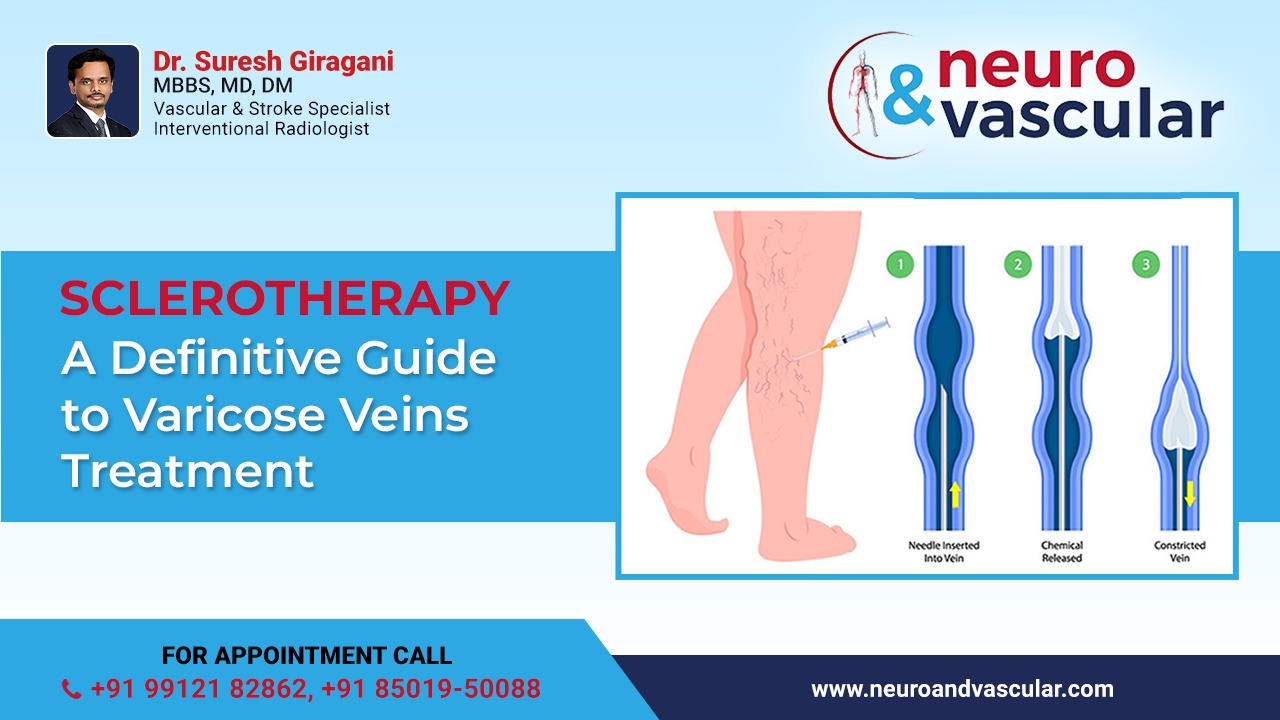
Sclerotherapy: A Definitive Guide to Varicose Veins Treatment

Varicose veins are a common vascular condition that affects millions of people worldwide. These twisted, enlarged veins can be not only unsightly but also lead to discomfort and complications if left untreated. Among the various treatment options available, sclerotherapy has emerged as a popular and effective method for addressing varicose veins. In this comprehensive guide, we will delve into the details of sclerotherapy, exploring its benefits, procedure, and considerations for those seeking relief from varicose veins.
Understanding Varicose Veins
Varicose veins occur when the valves in the veins malfunction, causing blood to pool and veins to enlarge. Factors such as genetics, age, pregnancy, and prolonged periods of standing or sitting can contribute to the development of varicose veins. While they may be primarily a cosmetic concern, varicose veins can also lead to symptoms like pain, swelling, and aching in the legs.
Symptoms of Varicose Veins:
Here are some common symptoms associated with varicose veins:
- Visible, Enlarged Veins:
- One of the most noticeable symptoms is the appearance of enlarged, twisted, and bulging veins, usually on the legs. These veins may appear blue or purple.
- Aching or Throbbing Pain:
- Many individuals with varicose veins report aching or throbbing pain in the affected area, often worsening after prolonged periods of standing or sitting.
- Burning or Itching Sensation:
- Some people may experience a burning or itching sensation over the veins. This discomfort can be mild or more pronounced.
- Heaviness or Fatigue in the Legs:
- Varicose veins can cause a sensation of heaviness or fatigue in the legs, particularly towards the end of the day or after extended periods of activity.
- Swelling (Edema):
- Swelling, especially around the ankles and lower legs, can occur due to fluid retention caused by impaired blood circulation.
- Muscle Cramps:
- Cramping in the legs, particularly at night, may be associated with varicose veins. This can be a result of poor blood circulation and increased pressure in the affected veins.
- Skin Changes:
- Skin changes near the affected veins may include discoloration or darkening of the skin. In severe cases, the skin may become dry, itchy, or develop a rash.
- Restless Legs Syndrome (RLS):
- Some individuals with varicose veins may experience Restless Legs Syndrome, characterized by an uncontrollable urge to move the legs, often accompanied by discomfort or a crawling sensation.
Sclerotherapy: How Does It Work?
Sclerotherapy is one of the minimally invasive procedure designed to treat varicose veins, apart from laser ablation and glue ablation. It is done by injecting a solution directly into the affected veins. The solution, often a liquid or foam, irritates the lining of the vein, causing it to collapse and eventually fade away. As a result, blood is rerouted through healthier veins, and the treated veins are gradually absorbed by the body.
Sclerotherapy: In what type of Varicose veins it is indicated ?
Sclerotherapy is specifically helpful in patients with varicose veins due to perforator incompetence, recurrent venous ulcers due to perforator incompetence. Sometimes it is used in combination with laser ablation to treat perforator incompetence and side branch varicosities.
Benefits of Sclerotherapy:
- Non-Surgical Approach: Sclerotherapy is a non-surgical procedure, making it an attractive option for individuals seeking minimal downtime and a quicker recovery compared to traditional surgical interventions.
- Effectiveness: Many patients experience significant improvement in the appearance and symptoms of varicose veins after just a few sessions of sclerotherapy. The procedure has a high success rate in treating both small and medium-sized veins.
- Minimized Discomfort: Sclerotherapy is generally well-tolerated by patients. While some may experience mild discomfort during the injection, any pain is usually short-lived. The procedure is performed in an outpatient setting, allowing patients to resume their daily activities shortly afterward.
The Sclerotherapy Procedure:
- Consultation and Evaluation: Before undergoing sclerotherapy, a thorough examination is conducted by a qualified interventional radiologist to assess the extent of varicose veins and determine the most suitable treatment type among the various percutaneous treatments available.
- Preparation and Local Anesthesia: The patient is positioned comfortably, and the skin over the targeted veins is cleaned. In some cases, a local anesthetic may be applied to minimize any potential discomfort.
- Injection of Sclerosing Solution: The sclerosing solution is injected into the affected veins using a fine needle. The number of injections depends on the size and number of veins being treated.
- Post-Procedure Care: Following the procedure, patients are advised to wear compression stockings to promote blood circulation and reduce swelling. Walking and regular physical activity are encouraged to aid in the healing process.
Conclusion:
Sclerotherapy has proven to be a highly effective and convenient option for treating varicose veins due to perforator vein incompetence. With its minimal invasiveness, quick recovery time, and notable success rate, sclerotherapy continues to be a preferred choice for individuals seeking relief from the discomfort and appearance of these subset of varicose veins. If you’re considering sclerotherapy, consult with best interventional neuroradiologist to determine if this treatment is right for you. Remember, prioritizing your vascular health can lead to improved well-being and enhanced quality of life.
About the Author:

Name: DR . SURESH GIRAGANI
INTERVENTIONAL RADIOLOGIST
DR. SURESH GIRAGANI CONSULTANT INTERVENTIONAL RADIOLOGIST at Apollo hospitals Jubilee Hills has more than sixteen years of clinical experience in vascular interventions with a special interest in neurovascular and peripheral vascular disease interventional procedures.